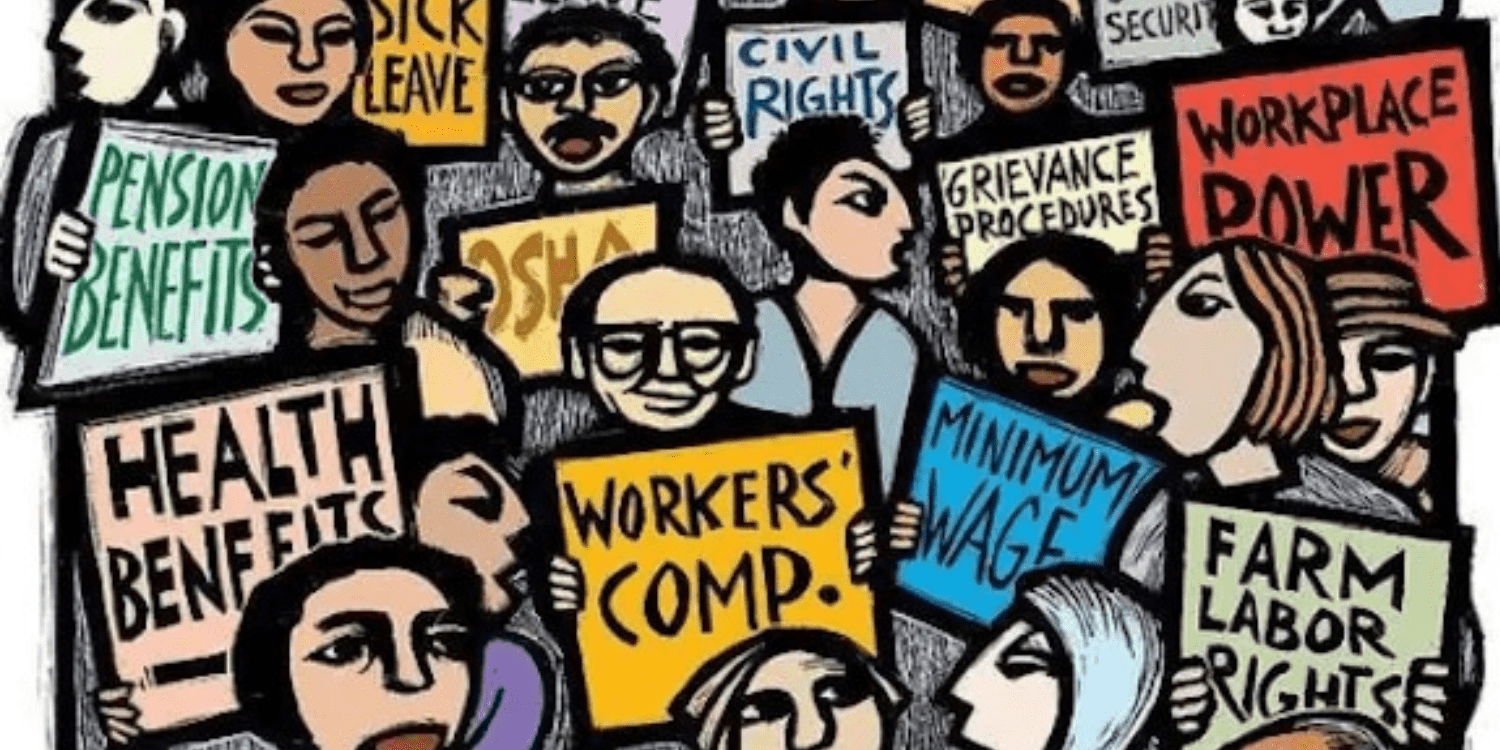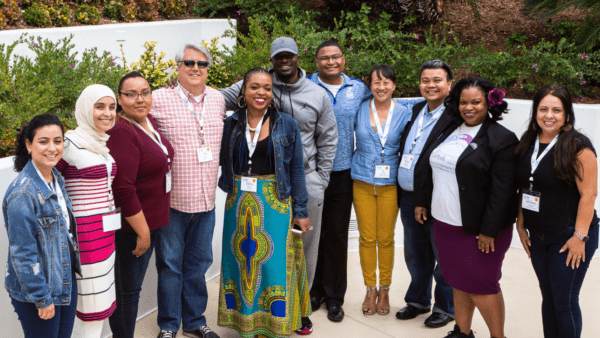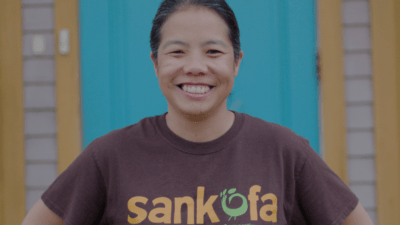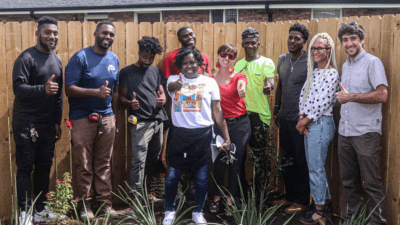On September 4th, our nation celebrated Labor Day. Labor Day 2023 marked an inspiring upsurge of worker mobilization and strikes across the country, in the midst of what has been called the “Hot Labor Summer.”
Over the first eight months of 2023, approximately 300,000 people have engaged in strikes and workplace actions nationwide, according to the Cornell University Labor Action Tracker.
Los Angeles has emerged as a focal point of worker organizing and strikes. In November and December 2022, 48,000 graduate student workers on all ten campuses of the University of California launched the largest and longest strike in the history of higher education. The United Auto Workers who represent the graduate students won a remarkable 46% wage increase.
In March of 2023, 60,000 teachers and classified workers of the Los Angeles Unified School District launched a three-day strike and secured between a 21% and 30% wage increase. Teachers are the most unionized workforce in the country, and the wave of strikes led by education unions in recent years have focused on quality public education, and popularized the notion of “bargaining for the common good.”
As “Hot Labor Summer” transitions into fall, the energized wave of solidarity-focused action by the nation’s workers shows no signs of slowing down.
Currently, 15,000 hotel workers in Southern California are on strike for better wages and working conditions, disrupting the hotel industry during the height of the tourism season. A central complaint has focused on wages so low that workers can’t afford to rent in Los Angeles, resulting in many hotel workers traveling hours each day in their commute to and from work. The union is currently launching a major boycott of the sixty hotels that are refusing to sign a fair contract with their workers.
10,000 screenwriters have been on strike for the past four months, and they have been joined on the picket lines by tens of thousands of actors. This is the first joint solidarity strike led by writers and actors since 1960. Although the entertainment industry has made massive profits during the pandemic, corporations are aggressively opposing the striking workers and threatening expanded use of artificial intelligence to replace writers and actors.
Public opinion largely supports the workers and opposes the perceived widespread corporate greed. Positive sentiment towards unions is at a 50-year high. Pro-union sentiment among young workers is even higher, now exceeding 80% in a recent poll.
What has led to this resurgence of labor activism, and why is this a critical issue for those who embrace racial justice?
During the worst pandemic in a century, racial and economic inequality has only intensified. The historic mobilizations during the pandemic led by the Movement for Black Lives were triggered by the police killings of George Floyd and Breonna Taylor, among countless others. But while the movement focused on the pervasive racial injustice in the criminal justice system, the link to economic injustice facing Black and other communities of color is profound. The extreme racial wealth gap is accompanied by deep racial inequities in education, housing, and health care.
National leaders on the right shamelessly defended white supremacy and encouraged racial divisions, while at the same time promoting an economic agenda that aggressively supported corporate domination and direct opposition to the rights of workers and unions. While corporations have made massive profits during the pandemic, including technology, the entertainment industry, and pharmaceutical corporations, workers have experienced crushing economic insecurity.
During the first two years of the pandemic, the world’s ten richest men doubled their wealth from $700 billion to $1.5 trillion. Currently, the three richest men in the United States own more wealth than one-half of the population. Top Fortune 500 CEOs’ salaries are at historic peaks, while workers in these same corporations have watched their salaries stagnate and inflation steadily rise.
Workers on the front lines of the pandemic have been celebrated as “essential workers.” While these essential workers put their health and well-being on the line, they have faced low wages, unsafe working conditions and lack of access to quality health care. Essential workers sacrificed dearly. Rates of infection and death have been especially high among health care, nursing home and home care workers. While many executives, managers and professionals worked remotely in the safety of their homes, essential workers did not have that luxury.
The economic inequality has had an especially pronounced impact on workers of color. Workers of color have suffered the most during the pandemic, including high rates of displacement, loss of income and lack of access to quality medical care. Infection and death rates among workers of color, especially low-wage workers, were significantly higher than others.
It is no accident that this year’s “Hot Labor Summer” has been characterized by heightened worker solidarity. Workers understand that regardless of whether they are employed in the public sector, the private sector, education, construction or manufacturing, they are all facing economic insecurity, rising living costs and a corporate culture that devalues workers.
Solidarity lies at the heart of the new labor movement that has demonstrated the power of collective action. Workers on the front lines have no illusions that corporations will operate in their best interests without direct pressure to introduce and implement new labor practices and policies.
The new labor movement has embraced the need for diversity and a commitment to elect leaders of the labor movement who reflect their membership. For the first time in history, the top two officers of the AFL-CIO represent the racial and gender composition of the changing workforce. In 2022, the AFL-CIO elected the first woman President, and the first Black Secretary-Treasurer.
Affirmative action policies have successfully diversified both workplace hiring practices and higher education admissions policies. Yet decades of progress are being undermined by the conservative majority on the Supreme Court. Labor is working closely with community partners to defend affirmative action in the face of these attacks.
The labor movement has also been at the forefront of organizing workers of color, women, immigrants and young workers. Young workers in particular have demonstrated their support for unions. 200 Starbucks stores across the country have been organizing in campaigns led mainly by young workers. Young workers are also leading campaigns to organize fast food restaurants, warehouses, tech industries, and the rideshare and “gig economy.”
Unions have embraced the demand for immigration reform and oppose the anti-immigrant policies that have caused extreme exploitation and abuse of immigrant workers. Wage theft, unsafe working conditions and violation of basic labor laws are pervasive among immigrant workers. Undocumented workers are particularly vulnerable, with limited ability to enforce basic labor laws and labor standards due to unscrupulous employers who threaten them with deportation if they dare to challenge workplace conditions. For example, hotel management in Los Angeles recently conducted audits of striking workers to determine and report on those with undocumented immigration status.
Unions have also been at the forefront of advancing the rights of LGBTQ workers on the job and in the community. The attacks on LGBTQ workers have been increasing, especially among the trans community. Conservative forces are recruiting candidates for elected office on an agenda to oppose LGBTQ rights, but not surprisingly, these same candidates oppose racial justice and worker rights as well.
The labor movement’s embrace of social justice issues transcends traditional workplace demands of wages and benefits. Multi-racial unity and multi-racial democracy serve the needs of all workers. The corporate attempts to divide workers based on race, gender and immigration status promote a misleading narrative that white workers are the beneficiaries of discrimination. Yet white workers are also losing economic ground during this time of growing economic inequality, and they too, suffer the consequences of a divided working class.
The global pandemic has also brought into focus that the workers’ movement is a global movement. Multi-national corporations know no boundaries and have historically shifted production overseas to maximize profits, exploit workers, undermine environmental standards, and extract natural resources from developing countries. Workers are increasingly standing together in solidarity and understand the benefits of cross-border organizing to advance worker justice.
As we celebrate the current upsurge of labor solidarity, we need to reflect on the tradition of social movements that have changed the course of U.S. history. The modern labor movement was born during the decade of the Great Depression of the 1930s, a time of massive strikes and worker mobilizations for economic justice. During the 1960s, the Civil Rights Movement brought about historic legislation to advance voting rights and to eliminate many forms of legal discrimination that for generations had maintained racial inequality and white supremacy.
2026 marks the 250th anniversary of the Declaration of Independence, and the founding of this nation. In the spirit of the nation’s founding principles, the W.K Kellogg Foundation’s Solidarity Council on Racial Equity is calling for a national mobilization to bring together millions of people united in a shared vision to promote multi-racial democracy. The people of the United States – children, adults, families and communities – would all benefit from a broad-based labor and community alliance for peace and prosperity.
Kent Wong is the director of the UCLA Labor Center; served as the founding president of the Asian Pacific American Labor Alliance, AFL-CIO; and is a member of the Solidarity Council on Racial Equity.








Comments